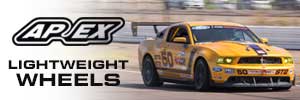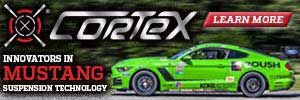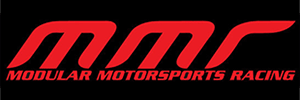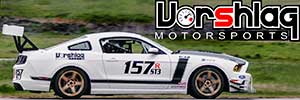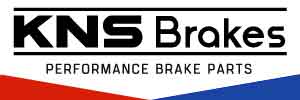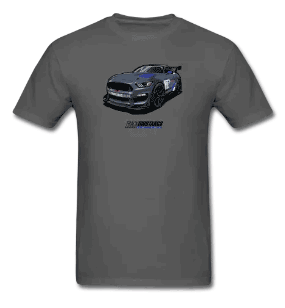OK, so to get myself motivated for the upcoming track day season, I'm reading Mark Donahue's book The Unfair Advantage. Anyway he said when he took over the '69 AMC Trans Am race cars in 1970, he found that they had been lowered to the point that they were almost undrivable. He raised the cars and found out they really wanted to be low. So rather than going the usual 'lowering spring' route, they used uprights [steering knuckles for street cars] that had the spindle raised on them. This sounds like a better way to lower a car since it doesn't upset the suspension geometry nor limit suspension travel as much. Basically, instead of moving the car down on the suspension, you move the wheel up. Has anyone heard of using this technique on our cars?
- Welcome to the Ford Mustang forum built for owners of the Mustang GT350, BOSS 302, GT500, and all other S550, S197, SN95, Fox Body and older Mustangs set up for open track days, road racing, and/or autocross. Join our forum, interact with others, share your build, and help us strengthen this community!
You are using an out of date browser. It may not display this or other websites correctly.
You should upgrade or use an alternative browser.
You should upgrade or use an alternative browser.
Another lowering technique
- Thread starterHermes
- Start date
This site may earn a commission from merchant affiliate links, including eBay, Amazon, and others.
More options
Who Replied?JScheier
Too Hot for the Boss!
Nowadays they call the 'drop spindles'. I've seen them for Fox body and SN-95 mustangs (I think Agent 47 and/or Contex has them). The geometry in those mustangs was WAY worse than what is in the S197.
zzyzx
Steve
- 299
- 0
FRPP front lower control arms for Boss 302S: M-3075-RA
These don't lower the car per se, but that address the geometry aspect once lowered.
Service replacement for 2013 Mustang Boss 302S Race Car
Fits 2011-2013 Mustang
Ball joint is 19.2MM longer than stock; offers improved geometry for track use
Threaded ball joint for easy replacement
Front Control Arm Bushing kit M-5638-C and Bump Steer Kit M-3130-R4 recommended
These don't lower the car per se, but that address the geometry aspect once lowered.
- Thread starter
- #4
JScheier said:Nowadays they call the 'drop spindles'. I've seen them for Fox body and SN-95 mustangs (I think Agent 47 and/or Contex has them). The geometry in those mustangs was WAY worse than what is in the S197.
Thanks for the response. Interesting that they don't have them or need them for the S197. I thought it sounded like a good way to have your cake [lower cg] and eat it too [decent suspension travel and geometry]. Like you said maybe the S197 geometry lends itself to lowering via spring change without too much effect on geometry.
They have control arms doing similar charges
There using taller ball joints ect
So there are improvements that can be made
Dropped spindles are always better way of lowering a vehicle
Its just hard to find the parts for certain apps getting easier these days though
Steve
There using taller ball joints ect
So there are improvements that can be made
Dropped spindles are always better way of lowering a vehicle
Its just hard to find the parts for certain apps getting easier these days though
Steve
Grant 302
basic and well known psychic
Hermes said:Like you said maybe the S197 geometry lends itself to lowering via spring change without too much effect on geometry.
Some of the geometry effects from lowering are positive too...
I think the aftermarket always focuses on the cheapest and easiest solutions first. If drop spindles were available for our cars, most people wouldn't leave the stock springs on anyway.
I don't think the loss of travel is too bad up front, but I'd certainly like an easy way to increase the available travel for the rear suspension.
pufferfish
Supporting Vendor
since the spring perch is on top of the axle tube out back, there is no way to lower the rear with stock springs.
the frpp lower a arm only changes the angle the arm sits at compared to stock. the ride height is between the strut tower and the spindle.
the frpp lower a arm only changes the angle the arm sits at compared to stock. the ride height is between the strut tower and the spindle.
- 367
- 1
Guys,
The idea behind lowering the car via drop spindles is to decrease the ride height while simultaneously raising roll center (rather than dropping it). In it's simplest form, this achieves 2 things:
1) Lowers cg - increases ultimate limits, as there is less weight transfer under fore/aft/side loads (braking, cornering) and thus allows for better use of the traction available from tires.
2) Raises roll center - the higher the roll center, the less the car wants to roll. Sounds counter intuitive, but the roll center is basically a lever arm which acts upon the car's CG. A higher roll center means the lever arm is shorter, the distance between the cg and the roll center is decreased (see image below).
The key here is that the mustang is a strut car. The more you lower a strut car, the further the roll center falls away from the CG --it's very easy to have the roll center below ground...so actually, a lower mustang means a mustang which will want to roll more (all things being equal). This brings a few compromises:
1) The suspension now is operating outside of it's originally designed movement range. It goes deep into the zone where the factory designed bump steer is being "activated" more often...throwing off your mid corner bite.
2) The lower roll center means more roll...and with a strut car, you have very little (if any!) dynamic camber. So the more you roll, the more your tire contact patch decreases. This yields a car which doesn't want to turn in on corner entry, begins to push mid corner (so you need to wait longer to put down power), and is just straight up sloppy.
In most production cars, you want to keep ride heights within around 1 inch of the original height...assuming a somewhat mild spring rate (all lowering only springs are very mild). Fixing the roll center greatly enhances performance.
So Donohue addressed a few things with the idea of running a car low and also using drop spindles. The roll center was higher up, or even at stock location...but the cg was low. So now you have a lower car, with a lower cg, with a roll center that doesn't promote additional body roll. Wonderful things on a strut car.
See image below for visualization of roll center. Note the difference in distance between CG and roll center. The further the distance, the more the car wants to roll:
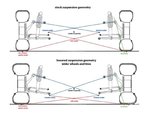
The idea behind lowering the car via drop spindles is to decrease the ride height while simultaneously raising roll center (rather than dropping it). In it's simplest form, this achieves 2 things:
1) Lowers cg - increases ultimate limits, as there is less weight transfer under fore/aft/side loads (braking, cornering) and thus allows for better use of the traction available from tires.
2) Raises roll center - the higher the roll center, the less the car wants to roll. Sounds counter intuitive, but the roll center is basically a lever arm which acts upon the car's CG. A higher roll center means the lever arm is shorter, the distance between the cg and the roll center is decreased (see image below).
The key here is that the mustang is a strut car. The more you lower a strut car, the further the roll center falls away from the CG --it's very easy to have the roll center below ground...so actually, a lower mustang means a mustang which will want to roll more (all things being equal). This brings a few compromises:
1) The suspension now is operating outside of it's originally designed movement range. It goes deep into the zone where the factory designed bump steer is being "activated" more often...throwing off your mid corner bite.
2) The lower roll center means more roll...and with a strut car, you have very little (if any!) dynamic camber. So the more you roll, the more your tire contact patch decreases. This yields a car which doesn't want to turn in on corner entry, begins to push mid corner (so you need to wait longer to put down power), and is just straight up sloppy.
In most production cars, you want to keep ride heights within around 1 inch of the original height...assuming a somewhat mild spring rate (all lowering only springs are very mild). Fixing the roll center greatly enhances performance.
So Donohue addressed a few things with the idea of running a car low and also using drop spindles. The roll center was higher up, or even at stock location...but the cg was low. So now you have a lower car, with a lower cg, with a roll center that doesn't promote additional body roll. Wonderful things on a strut car.
See image below for visualization of roll center. Note the difference in distance between CG and roll center. The further the distance, the more the car wants to roll:

